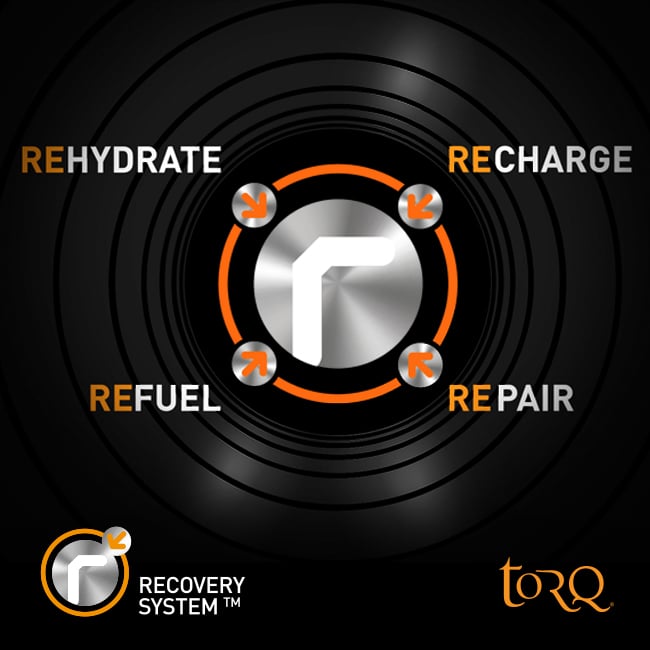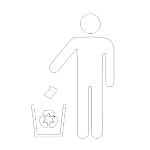Recovery is more than a passive process—it’s where progress truly takes shape. After physical exertion, the body enters a phase of repair and adaptation. With the right approach, this time can be used not just to rest, but to rebuild stronger, more resilient systems.
The 4 R’s of Recovery
To simplify the essentials of post-exercise recovery, think in terms of the 4 R’s:
Rehydrate: Replace fluids and electrolytes lost through sweat to restore balance.
Refuel: Replenish carbohydrates to rebuild energy reserves.
Repair: Support muscle recovery with quality protein and amino acids like L-Glutamine.
Recharge: Aid cellular energy regeneration with nutrients like D-Ribose to restore ATP levels.
Click on the ‘further reading’ link at the bottom of this article to learn more about the supplements L-Glutamine and D-Ribose.

Our 4-Phase Recovery Framework
Phase 1 – Strategic Fuelling During Exercise: Recovery begins before a session ends. Consuming carbohydrates during exercise helps preserve the body’s stored energy (glycogen), sparing muscle tissue and reducing the stress placed on the body afterward. It also helps maintain hydration and electrolyte balance. The more supported the body is during effort, the smoother the recovery process will be.
Phase 2 – Immediate Post-Exercise Replenishment: The first 15 minutes after exercise offer a valuable window. During this time, the body is especially receptive to nutrients that replenish glycogen stores and kickstart muscle repair. A well-balanced recovery drink—providing carbohydrates, protein, electrolytes, and compounds like L-Glutamine and D-Ribose—can make a significant difference. This combination helps restore energy, repair tissues, and rebalance fluids.
Phase 3 – Nutrient-Dense Dietary Intake: As training loads increase, so too does the body’s need for nutrient-rich foods. Meals should include ample carbohydrates and high-quality protein to support ongoing recovery. For those with higher energy demands, adding unflavoured carbohydrate powders to meals can help meet caloric needs without altering taste. Consistency and quality in everyday nutrition play a vital role in long-term progress.
Phase 4 – Advanced Recovery Support: When training becomes more intense or frequent, it can help to go further. Supplementing with nutrients like HMB, Beta-Alanine, or Sodium Phosphate can support muscle maintenance, enhance the body’s capacity for high-intensity work, and accelerate adaptation. These are not everyday necessities, but thoughtful tools for those seeking extra support under heavy workloads.
Again, further information on the supplements Beta-Alanine and Sodium Phosphate can be found by clicking on the link at the end of this article.

Immune System Considerations
Intense physical activity can temporarily suppress the immune system. To maintain resilience, it’s helpful to ensure adequate intake of Vitamin D, Vitamin C, Zinc, and L-Glutamine. These nutrients can support recovery and help protect against illness—especially during periods of heavy training or seasonal change.
Conclusion
Implementing a structured, phased recovery strategy enables you to maximise the benefits of your training, promoting adaptation and reducing the risk of overtraining. By addressing hydration, energy replenishment, tissue repair, and immune support, this will help you to sustain high levels of performance and achieve your long-term fitness goals.
If you found this article interesting and want to learn more, why not dive in deeper by visiting this page: The TORQ Recovery System








